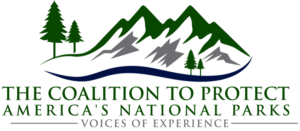
February 26, 2019
The recent government shutdown continues to have far-reaching impacts on our national parks and national park service employees. And it continues to impact the operation of the federal government. Though it’s nearly March, the FY 2019 appropriations bill just went into effect, and the administration is delayed in releasing their budget for FY 2020.
Before we get into the weeds on next year’s budget, let’s talk about some good news for this year. Congress rejected the large budget cuts presented by the Trump administration for FY 2019. Instead, they’ve created a bipartisan act which provides $3.22 billion for the national park service, which is $20 million above the amount from FY 2018, and $521 million above the president’s request.
There is additional funding for more park rangers, which will help the NPS continue to protect and interpret our irreplaceable resources. Fixed costs are covered, which is certainly helpful more parks and offices. There is support for historic preservation programs and heritage areas that will help maintain both park resources and important structures found throughout the country. There is some funding for newly established parks to ensure that protection and visitor services will be established as soon as possible. And, the act continues to support the construction program and the Centennial Challenge funds, which will help address the deferred maintenance backlog.
Unfortunately, this good news about FY2019 is outweighed by continuing concerns regarding FY 2020 funding. The bottom line is that even with the increased appropriations provided during the last two fiscal years, national parks struggle to fully satisfy their mission; to ensure that irreplaceable resources are protected and to provide the best possible visitor experience.
The deferred maintenance backlog is certainly a looming concern. Half of the backlog is the result of thousands of miles of roads, bridges, and other supporting structures that are in dire need of repair. With more and more people enjoying all our national parks have to offer, this only puts additional stress on the aging structures found in the parks. While the modest increase in appropriations for construction in FY 2019 will put a dent in the $11.6 billion backlog, funding remains inadequate to truly reduce it in a substantial way.
So where does that leave us? The backlog of maintenance and restoration needs continues to grow. And it does no good to repair park buildings and other assets if there is inadequate annual funding to maintain them. The Coalition believes the National Park Service needs a dedicated source of revenue to address the maintenance backlog, such as that being proposed in the Restore Our Parks Act. There will be no reduction in the backlog if funding is unreliable from year to year. And this revenue must be in addition to current annual appropriations, not in place of annual funding.
However, the deferred maintenance backlog is only a piece of the budget puzzle.
The NPS just does not have the funding to adequately staff and protect our parks. The agency is already suffering from significant reductions in staffing over the past decade due to decreased annual appropriations. To put this in perspective, appropriations for the National Park Service were $3.275 billion in FY 2009, a full ten years ago. This is $53 million more than was just appropriated for NPS in FY 2019. With inflation increasing by 17.3% since 2009, the NPS would need $3.84 billion in appropriations this year just to stay even with inflation. The Coalition believes Congress must increase NPS appropriations by $565 million in FY 2020 to bring the NPS back to the level of services the agency provided back in FY 2009.
The addition of new parks and programs, which are often celebrated (and justifiably so) also puts stress on the NPS budget. Over the last 10 years, the NPS has been directed to manage 27 new parks, 5 more national trails, 5 new wild and scenic rivers, and to coordinate assistance for 3 new affiliated areas and 9 national heritage areas, along with 8 grant programs. On top of this, park visitation remains high. Effectively managing these demands is proving more and more challenging with funding that has not kept up with costs. This means NPS annual appropriations are spread thin, as Congress adds new responsibilities without enough funding.
Here’s the tricky part. While the addition of new parks adds stress to an already inadequate budget, there is also a large land acquisition backlog. At the end of 2016, an estimated $2.1 billion was identified as necessary to purchase privately owned lands within current park boundaries. And in case that wasn’t concerning enough, the current administration has adopted a freeze-the-footprint goal, which blocks acquisition of key parcels of land and leaves them vulnerable to the threat of development.
There are also numerous historic structures across the country are in danger of being lost because of inadequate appropriations from the Historic Preservation Fund. As required by law, $150 million a year goes into this fund; but appropriations have not kept pace with the need.
331 million people visited national parks in 2016, bringing an estimated $18.2 billion economic impact to local gateway regions. Our national parks are clearly special places in the mind of the American public and we must make sure that Congress truly understands this. Our goal is to encourage a deeper understanding about what is needed to protect the important natural, historic, and cultural resources under the care of the Park Service, as well as what is needed to provide for a quality visitor experience. The NPS needs more funding and it needs reliable funding. The maintenance backlog, staffing, new parks, new lands, and preservation are all pieces of the puzzle. We must take all of these factors into account. We must continue to advocate loudly our national parks.
Coalition Executive Council Member Richard Ring recently testified before Congress regarding the FY 2020 budget. His testimony provided the content for this post. Click here to read the full script of the testimony.
